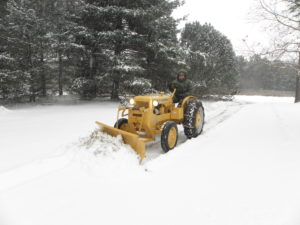By Glen Wunderlich
When the term “conservationist” is bandied about, as in present-day vernacular relative to wildlife, its loosely defined meaning can cause confusion. Fortunately, the Boone and Crockett Club (the Club) – the people that developed and nationalized the term in the late 19th century – has set things straight in a recently published essay about the terms “conservation” as opposed to “preservation.”
As foundational fodder for discussion, here are the terms defined:
“Conservation” focuses on using and managing natural resources to benefit people, but in keeping within the limits of supply, regrowth, and change, both natural and human-influenced. It is the most widely used and accepted model for the management of natural resources, including wildlife, in North America.
“Preservation” is a philosophy that generally views people as a negative influence on nature, and seeks to keep natural resources in a pristine state by limiting use and excluding active management by people.
What’s interesting is that the Club has never found the two schools of thought as being in opposition to each other. The distinction, however, is that preservation is actually a tool within the conservation approach to wildlife management that has been so successful over the past century.
Conservation professionals sometimes seek to reestablish a wildlife (or plant) species into an historic range. For a wildlife species, this usually involves protecting newly located animals from hunting and other impacts until the population grows large enough to withstand die-offs from predators, harsh weather, and disease. Short-term preservation then shifts to long-term active management, which brings benefits of keeping a wildlife population in balance with its food sources, other wildlife, and people. Game species whose numbers are controlled by public hunting also offer the important benefit of providing funding for further research and conservation efforts. Long-term preservation typically would not generate the same self-perpetuating and important benefits that a conservation approach provides.
In 1887, Theodore Roosevelt founded the Boone and Crockett Club along with a dozen of the most respected and influential men in America, all of whom were avid sportsmen. They committed themselves to reverse the wanton destruction of America’s resources in the name of progress, which led to the setting aside of millions of acres as public lands, establishing national parks, forest reserves, and wildlife refuges, training people to professionally manage them, and devising mechanisms to fund these efforts. The Club used the term “conservation” to describe this new relationship between people and nature, and defined it as “wise and prudent use without waste.”
Sportsmen helped enact laws that set bag limits, regulated hunting seasons, and protected migratory birds. They also enacted legislation that taxed their hunting activities to ensure there would always be adequate and reliable funding for conservation efforts, including the Federal “Duck Stamp” Act and the Pittman-Robertson Act.
Conservation’s history, inherent versatility, and ability to adapt to a changing world proves it should remain as the dominant approach for producing the outcomes people want—healthy, clean environments that contain sustainable populations of fish, birds, and other wildlife.
Progress has made for a new reality, as explained by Dr. Bruce D. Leopold: “Nature just can’t take its course because frankly, there is no location on Earth where humankind has not had an impact. From radioactive materials and dust in polar ice, to ever-expanding distributions of invasive species, the evidence is clear that disruption of natural processes is a global phenomenon. Humans are a significant component of natural ecosystems (contributing the good and the bad) and the notion of suddenly removing their influence is both illogical and impossible. Natural ecosystems are just too altered to be left alone.”
If ever we are to do what’s best for wildlife – which is an admirable goal shared by all parties – we must first understand what works and what does not.
In conclusion, all of management is judged by the results it achieves. Accordingly, the North American conservation model, which brought so many animal species from the brink of extinction to its current sustainable condition, is proof enough that Theodore Roosevelt was a visionary conservationist way ahead of his time.



